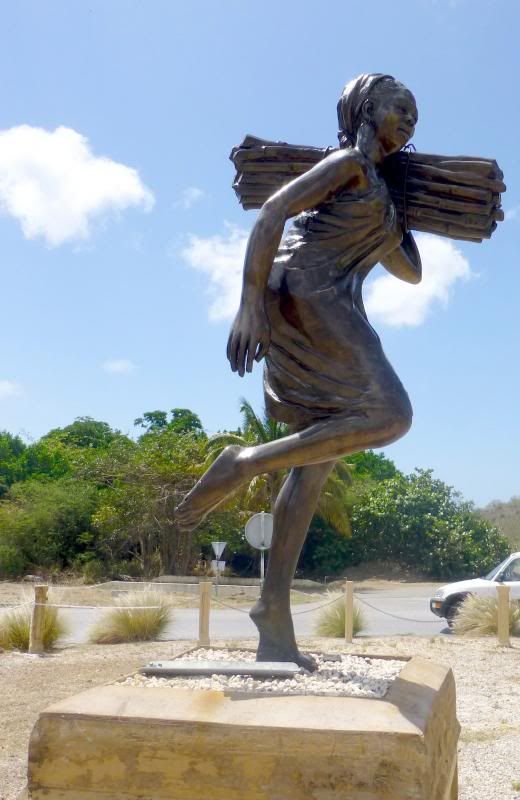Today Sint Maarten celebrates the the 158th Anniversary of the Proclamation of the Abolishment of Slavery on Sint Maarten.
Most businesses and government offices are all closed, and the day is marked with a joint ecumenical service at the Catholic Church in Philipsburg, followed by festivities at number 113 Front Street – the exact spot where a slave depot once was located.
The people here on the island commemorate the victims among their ancestors who were enslaved on this island for 200 years. The Spanish colonizers were the first to bring slaves from Africa to the island in 1648 to make them do the hard, physical labor, under the hot Caribbean sun. For a long time, slaves had been used here as “salt pickers” or field hands on cotton, cane sugar, or tobacco plantations.
In 1848, the French abolished slavery in their colonies, including on the French side of St. Martin. While slavery had already been abolished in the north of the island, slaves on the Dutch side of the island protested and threatened to flee to the French side to seek asylum. The local Dutch authorities finally relented and emancipated the slaves of the colonies. While this decree was respected locally, it took until 1863 for the Dutch to abolish slavery in all of their island colonies, and the slaves were finally legally freed as well.
On an island only 37 square miles small, people continued to be slaves for 15 years in the south, while people in the north were already emancipated. There were terrible fates and a lot of injustice. If you drive over the island today, you will pass many statues in the traffic circles commemorating the national heroes of the Dutch side.
Thus, One-Tété Lohkay was a young woman who was enslaved on a plantation in St. Maarten. However, she rebelled and ran away from her owners to the French side. She was then chased by her plantation owners, recaptured, and brought back to the plantation. As punishment for her rebelliousness and as a warning to other slaves, the slave owners ordered to cut off one of her breast. Thus, she became known as One-Tété Lohkay. This statue shows her with a bundle of cane sugar over her shoulder.





0 Comments